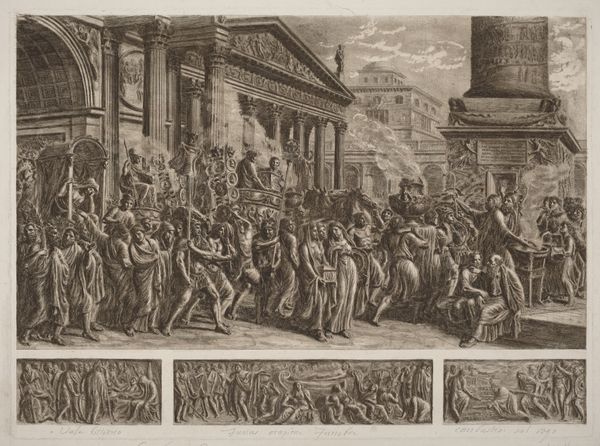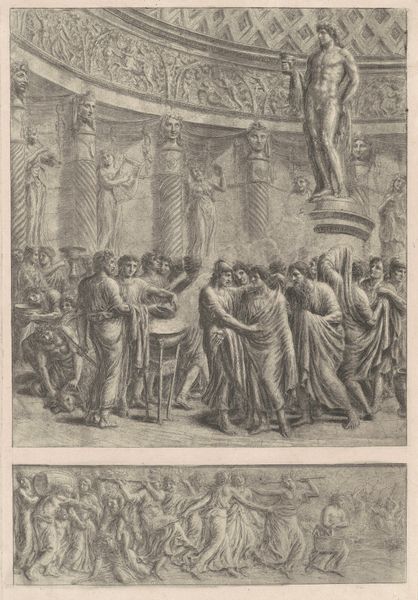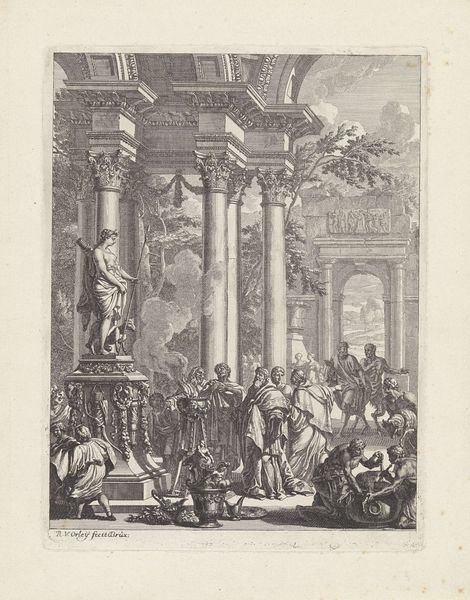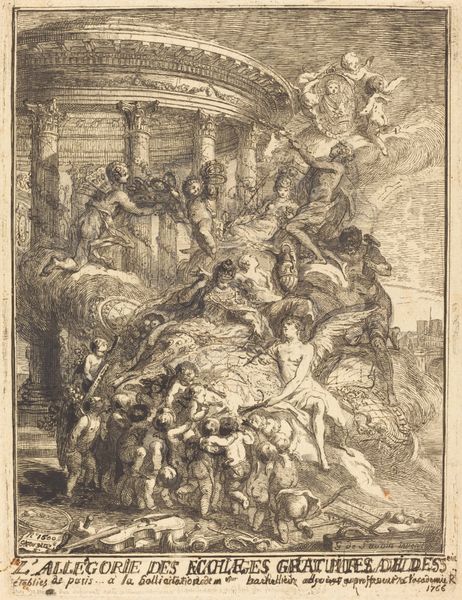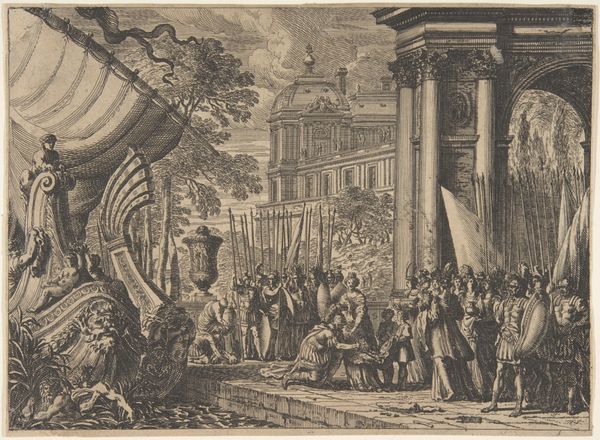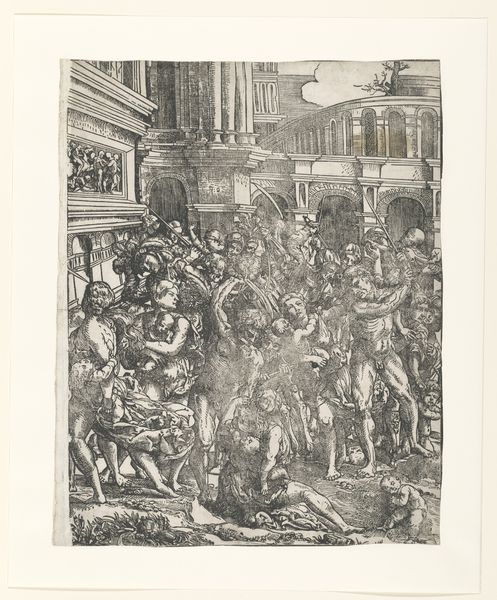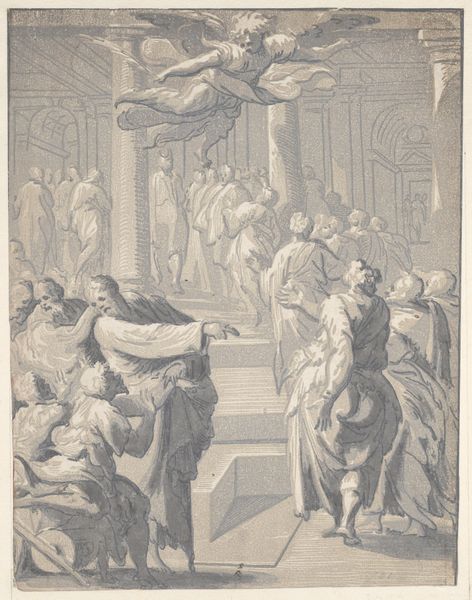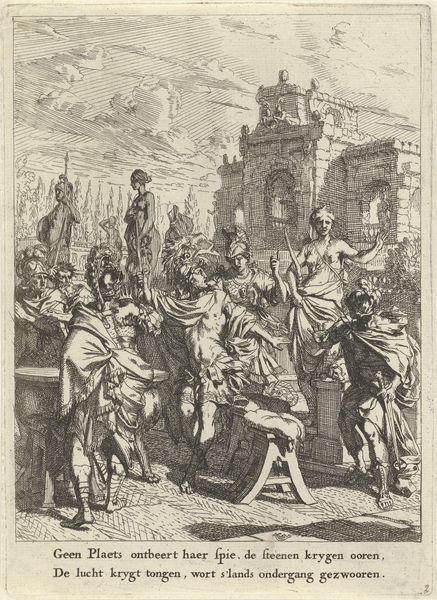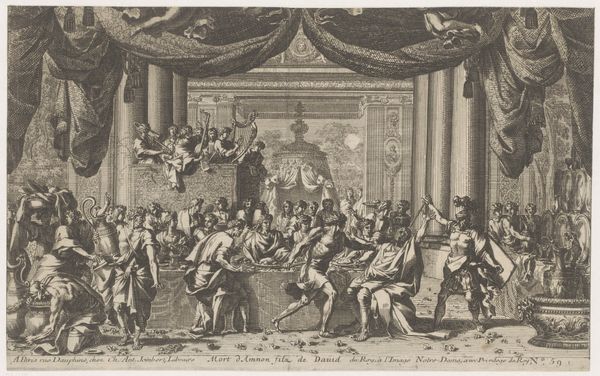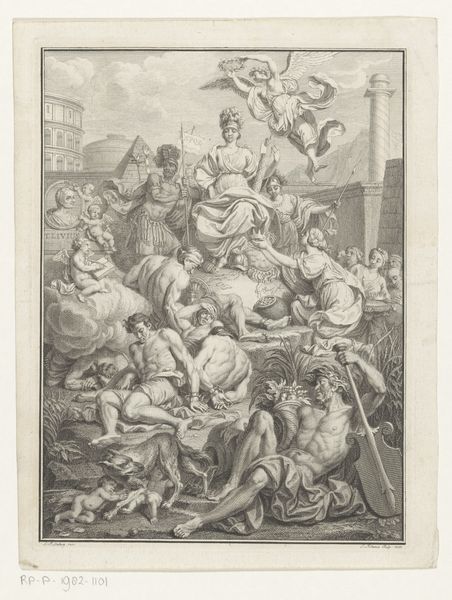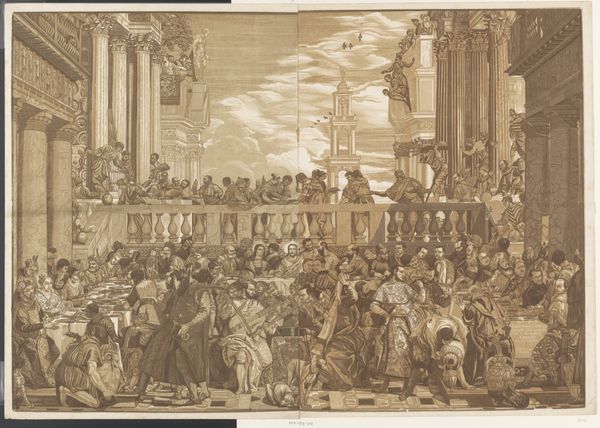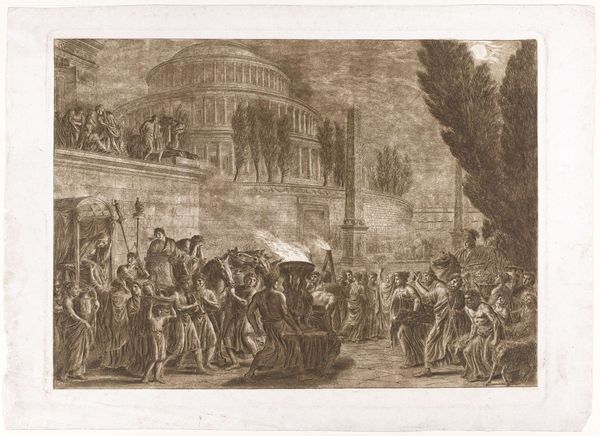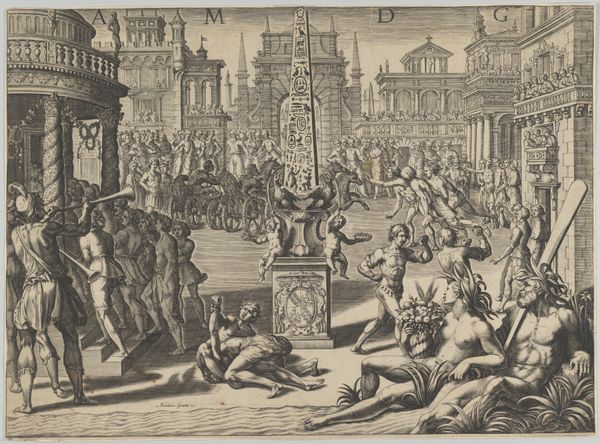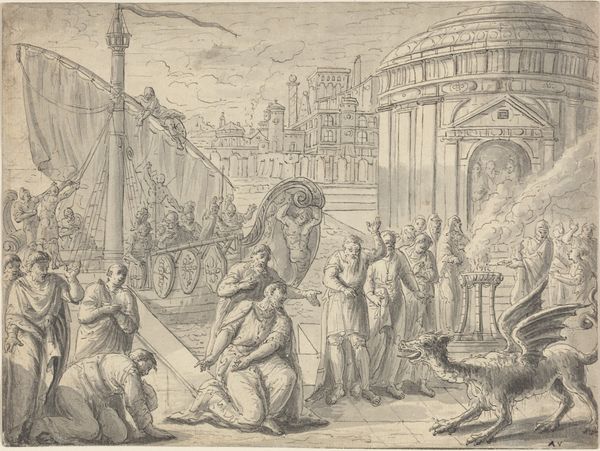
The Body of Hadrian Laying in State next to His Mausoleum 1764 - 1849
0:00
0:00
print, etching
#
neoclacissism
#
narrative-art
# print
#
etching
#
landscape
#
cityscape
#
history-painting
#
academic-art
Dimensions: plate: 60.5 x 44.8 cm (23 13/16 x 17 5/8 in.) sheet: 69.5 x 50 cm (27 3/8 x 19 11/16 in.)
Copyright: National Gallery of Art: CC0 1.0
Curator: Just look at the emotional frenzy Ademollo conjures in this print. You feel the raw sorrow and spectacle. Editor: And all that detail captured with etching techniques—the depth he achieves creates a landscape heavy with social narrative. What can you tell me about "The Body of Hadrian Laying in State next to His Mausoleum?" Curator: Created sometime between 1764 and 1849, this piece epitomizes Neoclassical ideals. Though, seeing it rendered in print opens another perspective, don't you think? Consider how prints democratize history and memory. Editor: I find myself immediately drawn to the iconography displayed across the structures—a symbolic language the era’s elite understood implicitly. Think of the Mausoleum itself; the sculpture placed strategically around it; it all broadcasts messages of power and legacy. Curator: Absolutely. The choice to depict Hadrian specifically places this within a narrative of idealized leadership, seen through a distinctly eighteenth-century lens. This image resonates far beyond its immediate subject. The weight of an empire rests on those tiny etched lines, so to speak. Editor: Which prompts an essential question: Whose empire are we *really* commemorating? Is it solely Hadrian's Rome, or perhaps more overtly the echoes of empire reverberating in 18th century European aspirations? The very act of meticulously reproducing and disseminating this image makes it political, doesn't it? Curator: Yes, every revival, every re-envisioning serves present-day needs as much as honoring the past. And so, the layered context behind something like this is why, I suppose, I never tire of art history. It constantly poses fresh questions about who we are, and how symbols continue to shape us. Editor: Indeed. I'll be pondering that layering for some time.
Comments
No comments
Be the first to comment and join the conversation on the ultimate creative platform.
